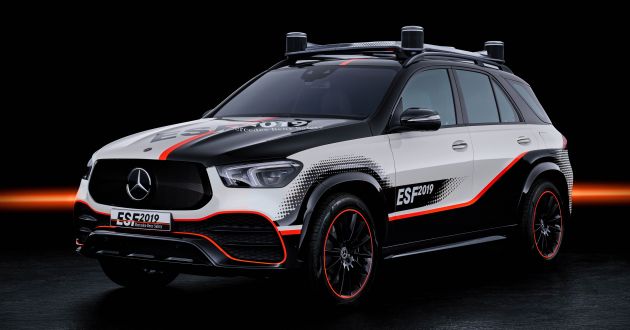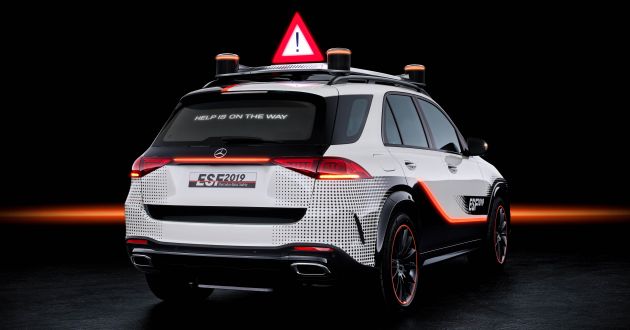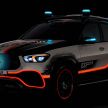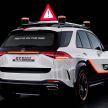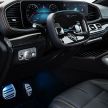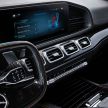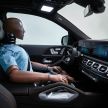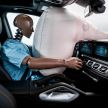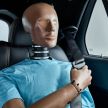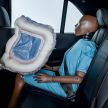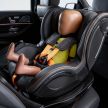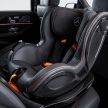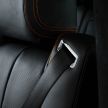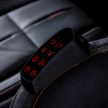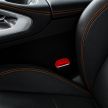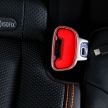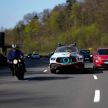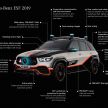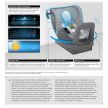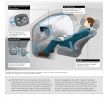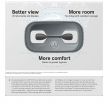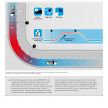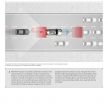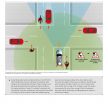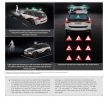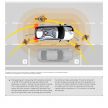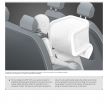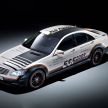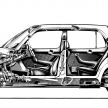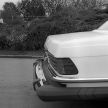Mercedes-Benz has introduced its latest Experimental Safety Vehicle (ESF), which is another addition to a long line of concepts showcasing safety ideas that could potentially make its way to future production vehicles.
Based on the current GLE, the ESF features a plug-in hybrid powertrain and is capable of automated driving in many situations. The vehicle will be presented at the 26th International Technical Conference on the Enhanced Safety of Vehicles (ESV) in Eindhoven, Netherlands in June, followed by a debut at this year’s Frankfurt Motor Show later in September.
Among the technologies showcased on the ESF is a new steering wheel and pedal cluster concept that automatically retracts when the car is driving in automated mode. This is to reduce the risk of injury in the event of a crash, while also clearly indicating the car is running in automated mode.
The safety belt system has also been integrated into the front seats, paired with high-performance belt tensioners that work during Pre-Safe situations. The German carmaker also relocated the driver airbag to the dashboard rather than the steering wheel, which is supplemented by integral side airbags that deploy from the side bolsters to wrap around the passenger.
Mercedes-Benz also identified that only around 5 to 20% of daylight reaches the eyes of the occupants, hence it fitted vitalising interior lights in the sun visors to keep the body in its natural biological rhythm. Studies performed by the company revealed test subjects tended to react more quickly thanks to the lighting, and are more alert.
As an autonomous vehicle, the ESF also features panels at the front and rear, LEDs in strategic places, as well as the Digital Light system to communicate with pedestrians and other motorists. These systems allow the vehicle to convey a variety of warnings, alerts or messages to others, such as displaying/projecting hazard symbols, or even what the front cameras are picking up.
Children aren’t left out either, as Pre-Safe Child sees the child seat being networked with the vehicle by radio. During scenarios where the Pre-Safe system is triggered, protective functions like the pre-tensioning of the belts of the child seat are performed.
As most child seats are incorrectly installed, the networked child seat, which follow the more comprehensive i-Size standard – ECE R129, has eight symbols as a sort of “checklist” that parents must follow to ensure proper installation. Sensors and a camera also allow parents to check on their baby’s condition, be it temperature, pulse and state of wakefulness.
While on the topic of the rear, the ESF also comes with a rear airbags located on the backrests of the front seats. These deploy via cylindrical tubes into a wing-shaped framework, reducing the loads acting on the head and neck vertebrae by up to 30% in a severe frontal impact.
Active safety systems also see improvements, with the Active Brake Assist now capable of detecting pedestrians and cyclists moving in parallel to the original direction of travel, which also applies if there are any cyclists in the blind spot when turning.
Lastly, Mercedes-Benz considered situations where vehicles were forced to remain stationary (breakdowns, accidents, etc.), whereby correct positioning of the warning triangle is important to warn other drivers. But how is a warning to be given in the future, when there are also driverless and automated vehicles on the roads? Who will put out the warning triangle in this case?
To answer these questions, the company provided the ESF with a deployable robot that emerges from the rear of the vehicle. The robot, along with the vehicle’s roof, is fitted with a warning triangle, with additional words of caution being displayed on the rear window.
“Safety continues to be our core brand value,” says Dr.-Ing. Rodolfo Schöneburg, head of the Vehicle Safety, Durability and Corrosion Protection Centre at Mercedes-Benz Cars.
“The great advantage of automating driving functions is that in the future, fewer accidents will be caused by driver error. However, automated and driverless vehicles also come up against physical limits, and there will undoubtedly be mixed traffic consisting of automated and non-automated vehicles for many years,” he added.
Looking to sell your car? Sell it with Carro.

